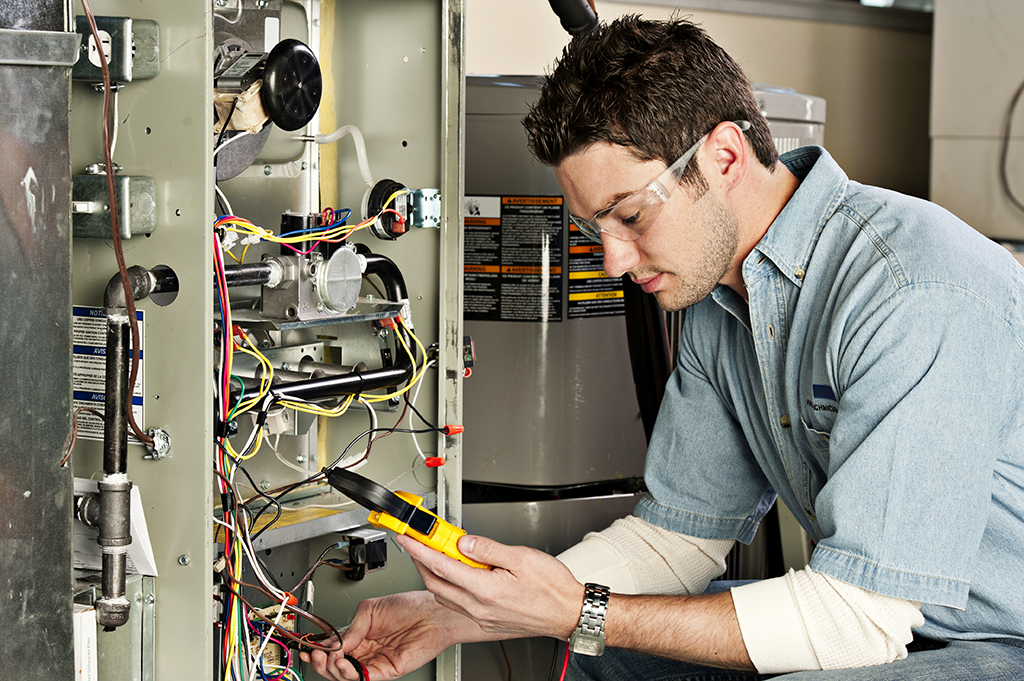Central air conditioners have been a boon to sweltering families during the summer since their introduction in the 1940s. Advances in technology have brought computer controls and more environmentally friendly coolants to central air conditioning systems. The 21st-century central air conditioner is a reliable and powerful product; however, it still needs regular maintenance to remain so.
 Generally, people will call a repair person if something breaks. If your air-conditioning unit is putting out tepid air when it’s 95 degrees outside, you can bet you’ll call the repair folks. By periodically having someone in to check your unit over and spending a little bit on preventative maintenance, however, you can save yourself a great deal of money. Federal laws now prohibit the refilling of leaky air conditioners, particularly those that use R22 Freon®, without any of those leaks being repaired.
Generally, people will call a repair person if something breaks. If your air-conditioning unit is putting out tepid air when it’s 95 degrees outside, you can bet you’ll call the repair folks. By periodically having someone in to check your unit over and spending a little bit on preventative maintenance, however, you can save yourself a great deal of money. Federal laws now prohibit the refilling of leaky air conditioners, particularly those that use R22 Freon®, without any of those leaks being repaired.
Finding leaks is a time-consuming proposition. First, all the Freon® must be pumped out of the system, and the system must be filled with harmless nitrogen. Then, a technician must go along every pipe both inside and outside of the home and check every inch for leaks. Remember, there might also be multiple leaks. Once all the leaks have been found, they must be plugged. Thereafter, the technician must empty the nitrogen from the system and use what’s known as a sealant kit to doubly seal the inside of all the pipes. Only then can the Freon® be recharged. Furthermore, if the technician does an examination of both the outside fan assembly and the furnace and determines that the problem is with one of those two units rather than in one of the pipes, the bigger units must be replaced anyway.
Because heating, ventilation, and air-conditioning, or HVAC, is a skilled trade, you can expect to pay the skilled technicians who come to your home or business at a commensurate rate. In most cases, the fee just for showing up will be somewhere between $60 and $100, and the hourly rate is likely to be equal to that or more. If your problem occurs after hours and requires immediate assistance, you can expect to pay double those rates as overtime. In short, if you just leave your air conditioner be until it breaks, you could spend as much as $1,000 for a repair person to do the necessary work or even $2,000 during overtime hours. Even after that, the technician might tell you that you need to replace your equipment.
By contrast, a preventative maintenance check will usually take less than half an hour. The technician will check the Freon® pressure and use a gauge to see if there are any leaks in the line. He or she will also check to make sure the temperature regulator is in good order and that the air temperature that is produced by the unit is within operating parameters. At the furnace, the technician will check to see if the coil is in working order and if it’s freezing up for any reason. Such a visit, even at $100 an hour, will cost at most $150 or $200 after figuring in the “showing-up” cost. The best part is that you only have to do such inspections about once a year. As they say, forewarned is forearmed.
Eventually, however, even the hardiest air-conditioning unit will give up the ghost no matter how much maintenance you’ve done. If this happens to you, your first question is likely to be: “Should I fix it, or should I scrap it and buy another one?” Fixing it is always less expensive, but you have to consider how much it would cost to fix it in the future were it to break down again. There’s a simple formula for figuring this out: Take the repair cost and multiply it by the age, in years, of the unit. If the result is greater than $5,000, which is the usual cost of a new unit, get the new unit. For example, let’s say your unit is 10 years old. If a repair is $500 or less, do the repair. Otherwise, start shopping around for a new unit.